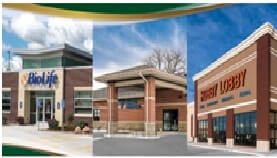 In a 1031 tax deferred exchange, a person is not required to pay capital gains taxes on a property he is selling, but is allowed to defer payment. This advantage allows the seller to purchase a greater or equal value property, thus maximizing the use of each taxable dollar.
In a 1031 tax deferred exchange, a person is not required to pay capital gains taxes on a property he is selling, but is allowed to defer payment. This advantage allows the seller to purchase a greater or equal value property, thus maximizing the use of each taxable dollar.
In a 1031 tax deferred exchange, the newly-acquired property that the exchanger acquires after the sale of the previously-owned property, (the Relinquished Property), is known as the Replacement Property. Both the Relinquished and Replacement Properties must be located in the US to be eligible for a 1031 tax deferred exchange. However, international property can be exchanged for other international property.
Allowable Replacement Properties include: properties 100% owned in Fee Simple; where, in order to acquire the Replacement Property, the exchanger is responsible for the due diligence necessary to locate and organize the acquisition of the Replacement Property; then, in many cases, to obtain a mortgage on the Replacement Property; and finally, to manage the Replacement Property. These often undesirable responsibilities may be similar to those duties which the exchanger was attempting to avoid through the sale of the previously-owned Relinquished Property. And, the Replacement Property must be identified within 45 days of the sale of the Relinquished Property; and purchased within 180 days. In the purchase of fee simple properties as Replacement Properties, there is a substantial risk that an unforeseen event could prevent the valid acquisition of the Replacement Property within the time allowed, and hence to invalidate the exchange – leading to severely negative tax consequences.
It is also possible for multiple properties to be acquired as the Replacement Property under certain guidelines relating to the property identification process. However, not strictly adhering to these somewhat complex guidelines could jeopardize the validity of the exchange.
In addition to the acquisition of properties in Fee Simple, an alternative for the exchanger is the acquisition of fractional interests in one or more properties. One legal structure that the IRS considers allowable as a replacement Property are DST (Delaware Statutory Trust) investments.
Among the possible advantages of a DST property interest as a Replacement Property include: a) the exchange’s ability to acquire these interests quickly; b) the fact that any mortgage financing of the Replacement Property is typically in place at the time of the Replacement Property’s acquisition; c) the ability to easily diversify one’s holdings by acquiring multiple DST interests in different property types and geographical localities; and d) the lack of required management responsibility once the Replacement Property has been acquired. In addition, the income derived from a DST interest can often be largely or wholly sheltered by the depreciation that also flows to the owner of the DST interest.
To learn more about 1031 Tax Deferred Exchanges and DST investments, please choose an option below.